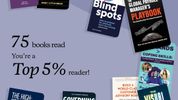If you're at all anxious about the impact of artificial intelligence on your career, I can strongly recommend this article and the accompanying video where Bernard Marr interviews Marcus du Sautoy (link below). As AI experts in the workplace and the arts respectively, they have plenty to say that cuts through the AI hype.
Firstly, AI isn't ready to take over from artists and creatives yet. Although it is good at improvisation - for a short space of time. Feed it the introduction to your blog and it can write a follow-on paragraph or two before it veers away from the subject and loses the plot.
What about jazz, where improvisation often plays a central role? AI is an excellent partner. It can listen to a professional pianist, for example, and then improvise a short, but connected, riposte.
You can see the strengths and weaknesses of AI in other musical genres. Take a similar scenario where you feed it 12 seconds taken from the start of a famous pop song.
The software picks up the melody, orchestration and rhythm, playing coherently for half a minute or so. But after that it wanders all over the place. If you're feeling brave, listen to this 'cover' of Never Gonna Give You Up, by Rick Astley.
So, artificial intelligence isn't going to replace creatives oany time soon. But if it's used the right way, it could become one of the most powerful creative tools available to writers and performers.
Take the two examples above, journalism and jazz music. In both cases, the human starts the creative conversation. AI responds, with lines of copy or bars of music.
Now, you could continue down this route, playing creative tennis until you have the complete article or a track for your next album. In fact, one review of GPT-3, the most advanced AI language model, used exactly this approach.
But it's much more interesting when you use AI as a creative catalyst that inspires your own work. As a writer I'm always looking at ways of pushing the creative boundaries of my own copy.
In a similar fashion, musicians who've played alongside an AI partner gain subtle, but important insights that helps lift their performance to the next level.
As Marcus du Sautoy explains during the interview, musicians often find themselves in a rut and go stale when composing new music. It's ironic, but also inspiring that a machine can help them reconnect with their creative human impulse.
Imagine this approach in other lines of work, not just the arts. The possibilities are endless. It's why we need to talk less about artificial intelligence and more about augmented intelligence: Software that complements and enhances our human qualities rather than replacing them.
If you're ready to be augmented (and not retired) take a look at the article and especially the video. It's well worth 15 minutes of your time.
We know machines and artificial intelligence (AI) can be many things, but can they ever really be creative? When I interviewed Professor Marcus du Sautoy, the author of The Creativity Code, he shared that the role of AI is a “kind of catalyst to push our human creativity.” It’s the machine and human collaboration that produces exciting results—novel approaches and combinations that likely wouldn’t develop if either were working alone.








